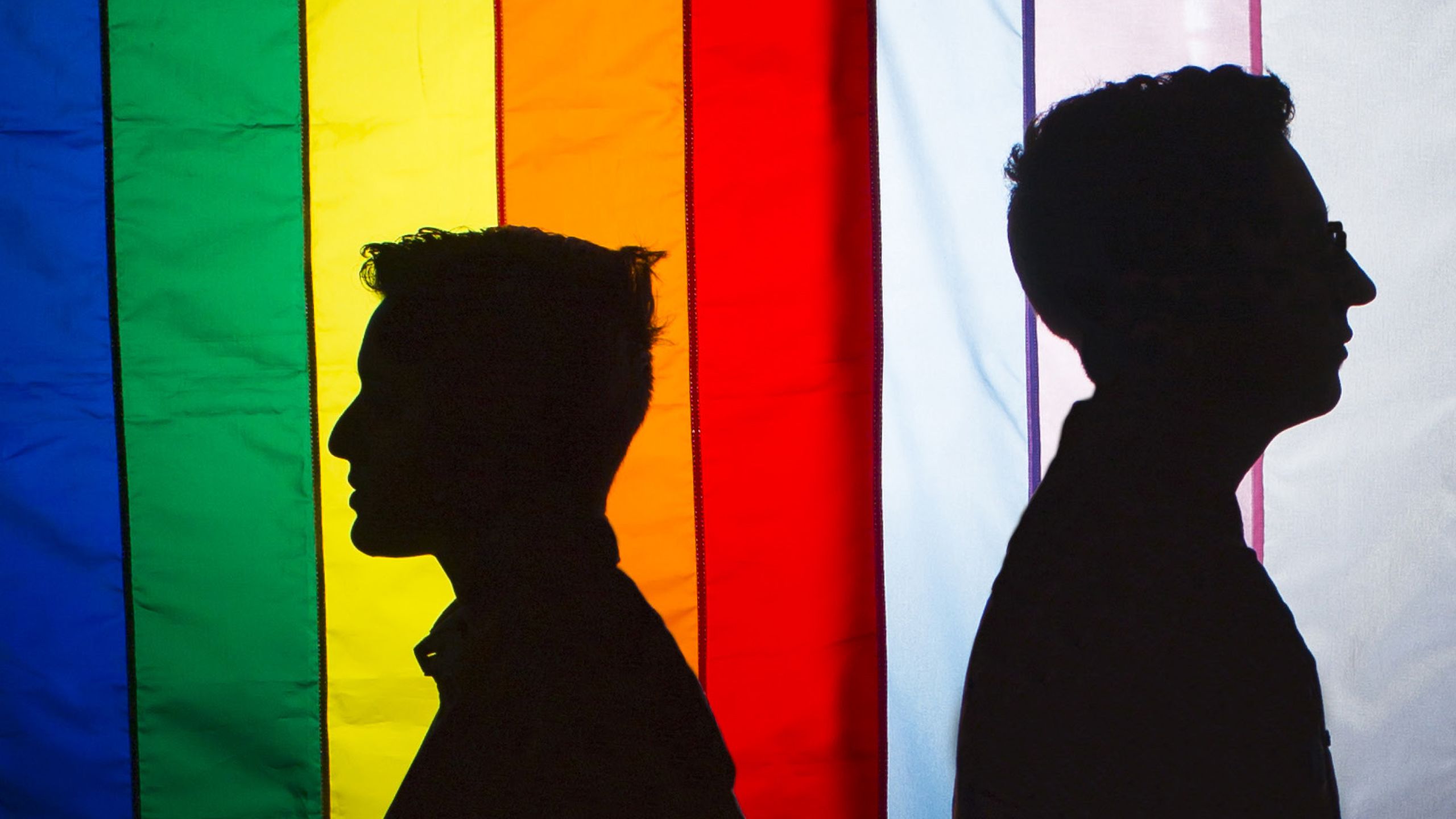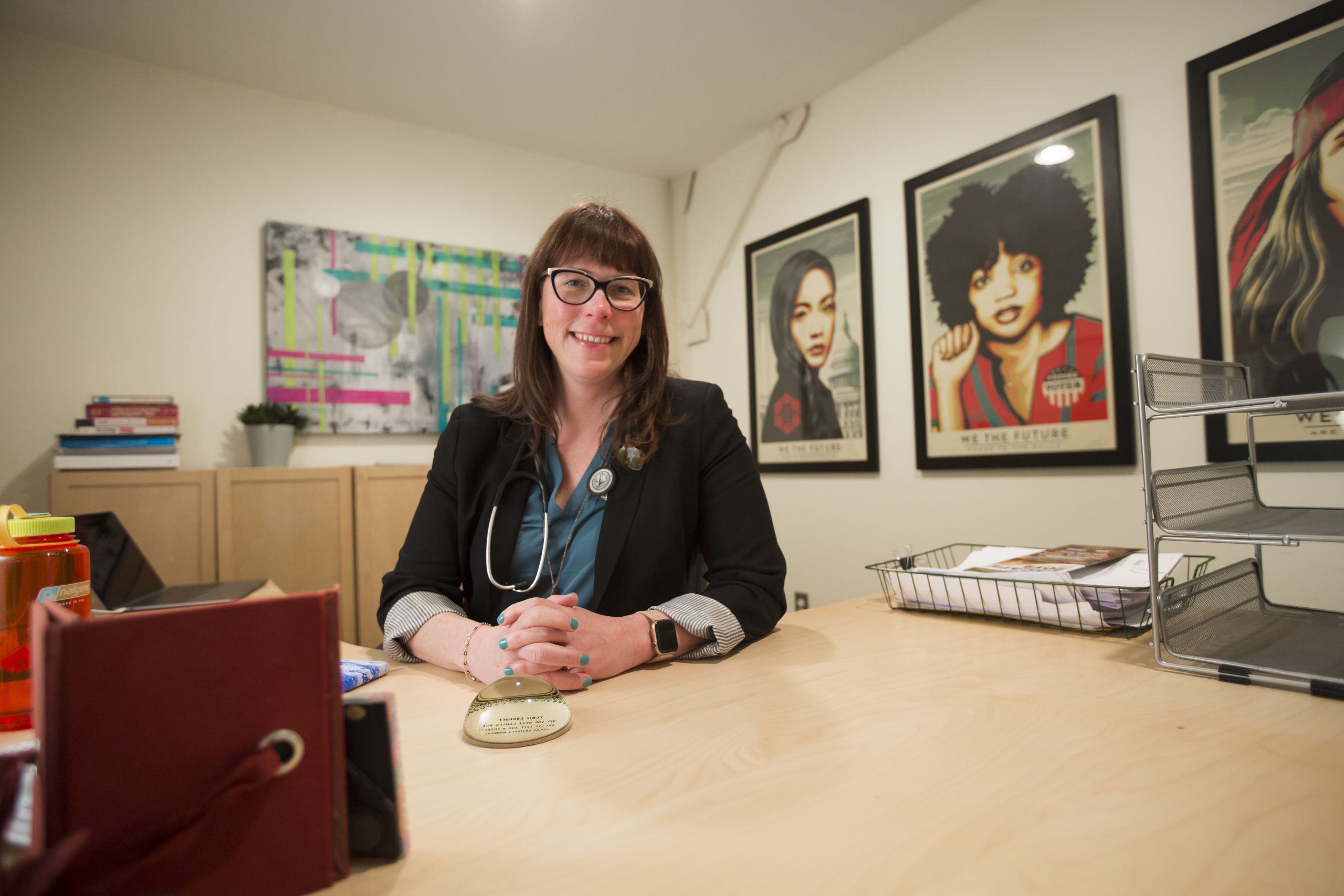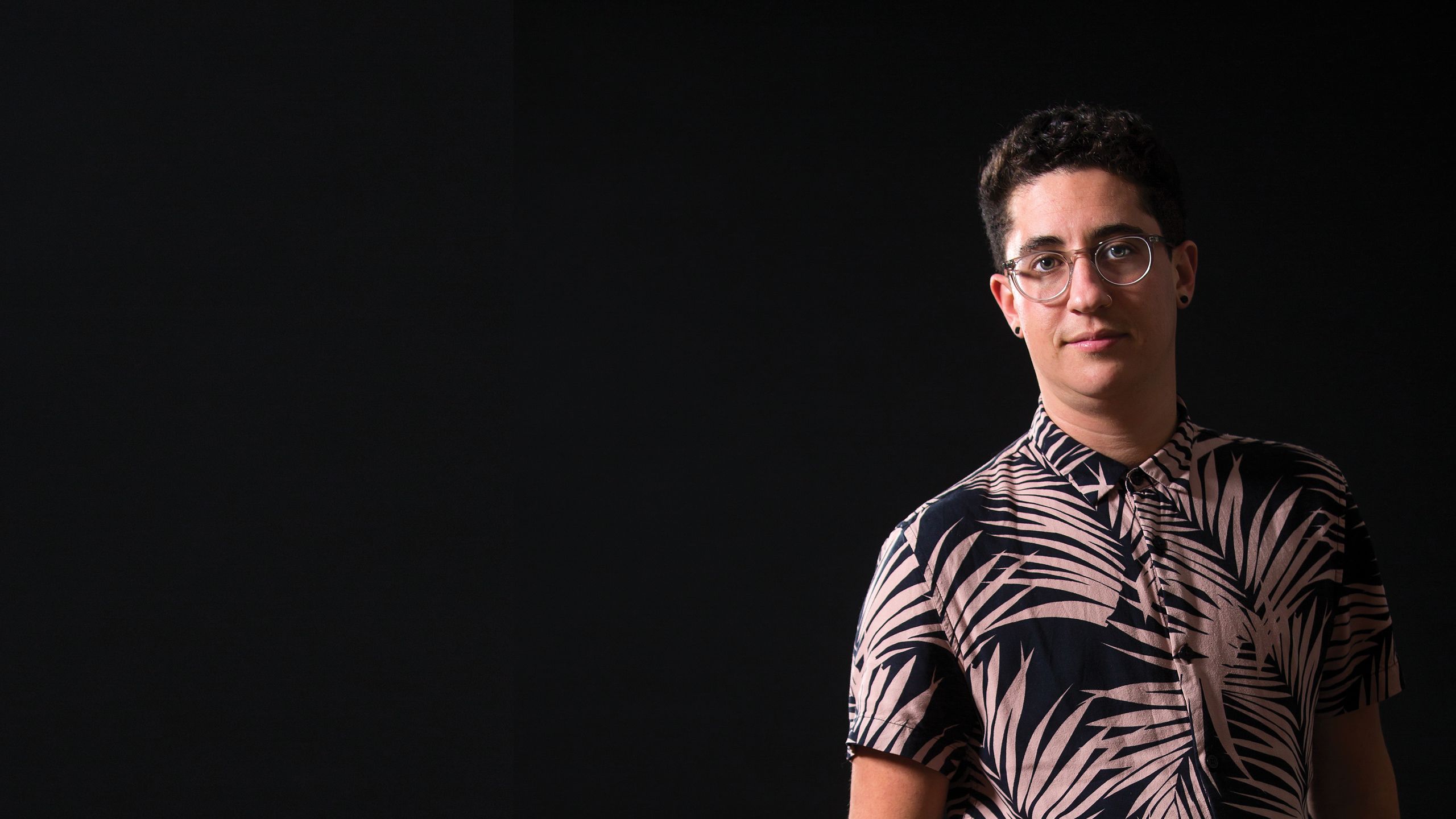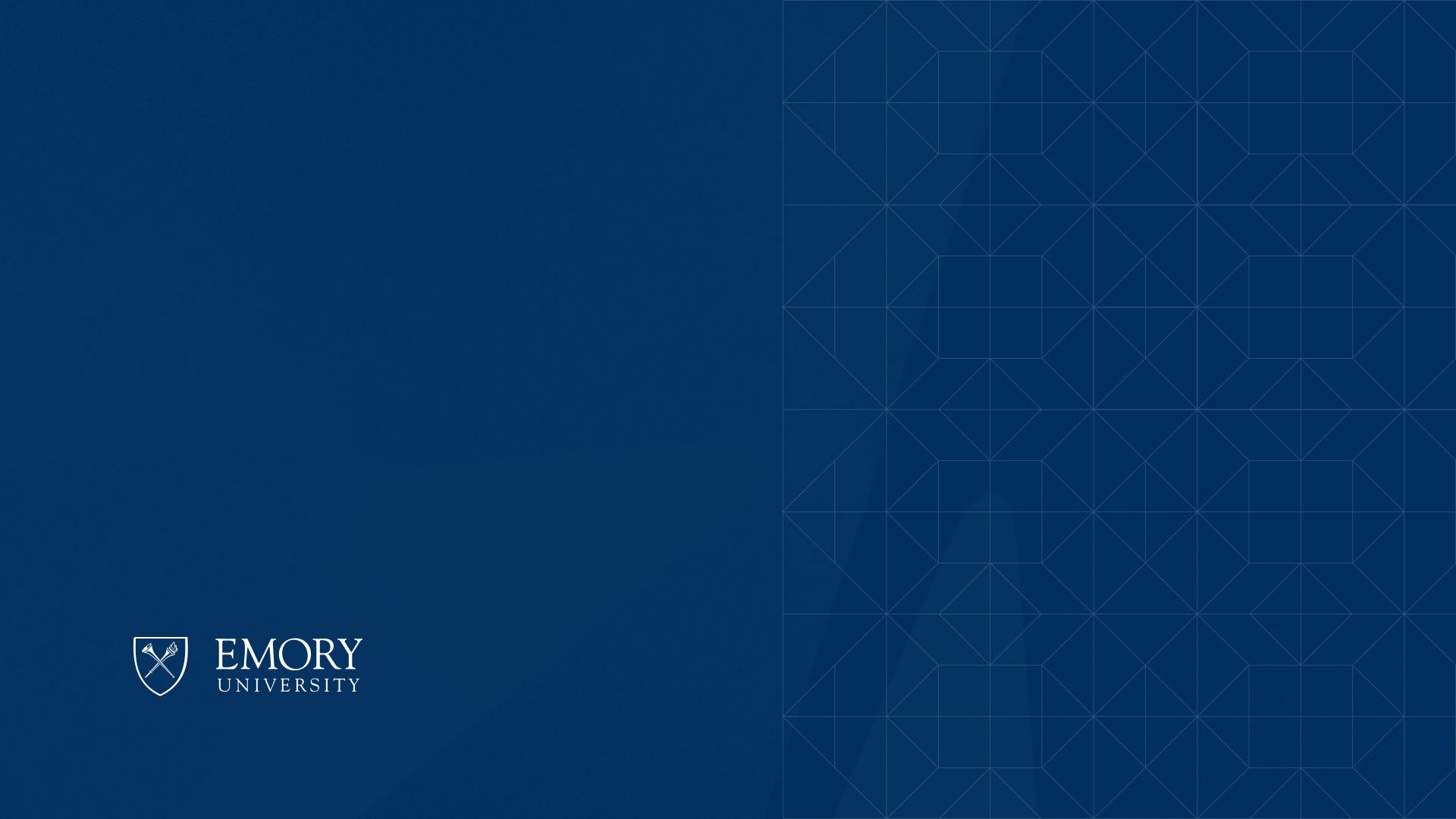UNSEEN
Bringing LGBTQ health to the forefront

The patient’s appointment started off smoothly enough:
First, she checked the box on the clinic’s intake form to confirm she was sexually active. Then she checked another box saying she was not using any form of birth control. That’s when things got rocky. The nurse read the patient’s answers and began a lecture.

“The nurse told the patient she was irresponsible and careless for not using contraception,” explains Tara Noorani 17N 18MSN, a family nurse practitioner with a different perspective on the situation. “As both a queer woman and a nurse myself, I knew there were a multitude of assumptions being made.”
In fact, the patient didn’t use birth control because she didn’t need to: her sexual partner was another woman. It was only when the patient volunteered this fact that the scolding ceased.
Noorani doesn’t blame that particular nurse for the uncomfortable moment. “The problem was that there was nowhere on the form where this patient could indicate the gender of her sexual partner,” Noorani says. “It was just assumed that every cis [biologically female] woman who came into the office would be having sex with a cis [biologically male] man. The problem was a structural one.”
That same structural problem of limited medical training in health care for LGBTQ (lesbian, gay, bisexual, transgender, queer) people has also been apparent to many others, including Noorani’s friends and classmates. Sasha Cohen 18N 19MSN, a nonbinary transmasculine person who uses they/them/their pronouns, doesn’t look forward to medical appointments either.
“I had a provider literally say: ‘So, what hormones do you need? What labs do you need? Write whatever prescription you want down,’ ” says Cohen. At the pharmacy, they found that the prescription had been written for enough hormones to last five years—way too much.
“That’s not good patient care,” Cohen adds. Competent gender-affirming hormone therapy includes laboratory monitoring and either telemedicine or inpatient visits to assess a patient’s progress and goals.
Noorani and Cohen knew they could use these difficult experiences—and the experiences they’d heard about from other friends within the LGBTQ community—to do better with their own patients. But they wondered: Would their straight, cisgender classmates want to do the same?
The curriculum at Emory University's Nell Hodgson Woodruff School of Nursing assumed that most, if not all, patients would be heterosexual and cisgender and did not include LGBTQ health topics such as what hormones to prescribe to transgender patients and how to monitor them. It’s impossible for nurses and other health care professionals to know something they never learn. What would have to happen to ensure that all nursing students now and in the future would be competent to care for one of these patients? Noorani and Cohen were determined to find out.
Tara Noorani is a family nurse practitioner at Ponce Primary Care, where she oversees hormone replacement therapy for transgender patients.


Family nurse practitioner and Emory adjunct nursing professor Michelle Sariev has worked with LGBTQ patients for the past decade.
Family nurse practitioner and Emory adjunct nursing professor Michelle Sariev has worked with LGBTQ patients for the past decade.
Missing out on health care
Even as more LGBTQ people are being open about their sexual and gender identities, the specific health issues they face have not gone away. They continue to be more at risk of violence, victimization, and discrimination, leading to higher rates of trauma, psychiatric disorders, suicide, and substance abuse as well as increased morbidity and mortality. Gay men, especially in communities of color, are at higher risk of contracting HIV and sexually transmitted infections. Lesbians are less likely than heterosexual women to get preventive screenings, including pap smears and mammograms. And some data suggest that lesbians are at higher risk of some cancers, although accurate data can be difficult to obtain since many surveys and studies do not ask about gender and sexual identities.
Despite their health needs, people who are gender or sexual minorities are less likely to seek out medical care than their cisgender heterosexual counterparts. Family nurse practitioner and Emory adjunct nursing professor Michelle Sariev 06N MSN has worked with LGBTQ patients for the past decade. She understands the disparity.
“Primary care is about keeping people healthy, involving everything from screenings to vaccines to diet and exercise,” says Sariev. “But when you talk about LGBTQ people, they’ve had such a bad experience historically in medical clinics. Oftentimes, they don’t go into care because they’re afraid they’re going to have another bad experience. So they miss out.”
And, like Noorani and Cohen, they worry about having to teach their provider about their health care needs. Even well-meaning LGBTQ-friendly nursing students and experienced professionals often lack the training to be competent in LGBTQ health. Until recently, nurses and other medical professionals have rarely been able to amass skills in LGBTQ health care through their classroom learning. Emory nursing historian Kylie Smith PhD, Andrew W. Mellon Faculty Fellow in Nursing and Humanities, explains why.
“Nursing education follows a fairly strict medical model. That can be problematic because that model itself is based on one type of human body, which is the white male,” she says. “The history is white men deciding what is normal and what is healthy. We’re still trying to overcome some of that historical legacy. It’s only recently that scientists have thought, ‘maybe this works differently in the female body.’ And it’s even more recently when scientists have thought, ‘what does male and female really mean?’ The curriculum hasn’t quite caught up yet.”
As a result, even in the recent past, those working with gender and sexual minorities had few options for learning besides on-the-job training. For Sariev, that training came working at local health care centers known for being LGBTQ-friendly.
“Like many nurse practitioners, I kind of got thrown in,” says Sariev, who supplemented her learning by attending conferences and asking questions of a transgender friend. “I learned a lot on the job. I was self-taught.”
Still, she knows there were downsides to her real-world education. “It’s very hard to be a new provider,” she adds. “Having to learn something you weren’t exposed to at school makes it more difficult. You have to really seek out opportunities. There’s no textbook. There are few guidelines.”
And yet the growing consensus is that caring for LGBTQ patients should be within the scope of all nurses. A 2018 position paper from the American Nurses Association (ANA) calls for nurses to be ready to meet the needs of their LGBTQ patients: “ANA affirms the need for nurses in all roles and settings to provide culturally congruent, competent, sensitive, safe, inclusive, and ethical care to members of LGBTQ+ populations, as well as to be informed and educated about the provision of culturally competent care.”
In other words, LGBTQ care must be incorporated into the roles of all nurses. Otherwise, the paper argues, health disparities—as well as discrimination—will continue.
Ready for action
In September 2017, as Noorani began the masters portion of the Accelerated BSN+MSN program, she found herself in a bind. She wanted to work with LGBTQ populations after graduation and attend conferences on transgender health to learn more. To apply for funds, she would need to make presentations at the conferences she attended— but there was no research relevant to LGBTQ concerns going on at Emory’s School of Nursing.
“It was a catch-22,” she says. Beloved School of Nursing Professor Sally Lehr had died that spring, and Lehr’s long-running course on Human Sexuality had been discontinued, leaving in its wake an absence of specific coursework focused on LGBTQ concerns. “I realized there was so much silence about LGBTQ issues in general,” says Noorani.
Then she met Sasha Cohen, who had just entered the School of Nursing as its first openly transgender student. It was a pivotal moment, says Noorani. “When I met Sasha, I realized two things. The first was that I wasn’t alone. The second—that my narrative, opinion, or experience didn’t matter—would continue to play out in the lives of future students if I didn’t say something.”
Ready to take action, Noorani sought out Arnita Howard, assistant dean for student affairs and diversity initiatives, who encouraged her to also speak with Dean Linda McCauley. In preparation for the meeting, Noorani wrote a letter of concerns and suggestions and gathered signatures of more than a hundred supportive classmates. That letter offered specific recommendations for the School of Nursing, including:
- Approving more clinical sites for student rotations where they could get experience with LGBTQ patients,
- Adding case studies to courses featuring people and families with diverse gender and sexual identities,
- Creating an expectation that faculty integrate LGBTQ issues into classroom topics,
- Prioritizing faculty candidates with an interest in LGBTQ health disparities,
- Providing more support for new students who identify as LGBTQ, and
- Creating funding for conferences on sexual and gender minority health.
Sasha Cohen is one of the organizers of SpeakOUT, a student group that promotes health equity and inclusion within the School of Nursing. They will receive their MSN in December.

In that meeting, Noorani also stressed the importance of supporting students at the School of Nursing who are racial and ethnic minorities and who may also feel marginalized or under-represented in the curriculum. In other words, her goal was to be intersectional, acknowledging the multidimensional identities of students, faculty, and staff.
“It was important to keep our vision and goals intersectional because our lives and the lives of our patients are intersectional,” says Noorani now. “I may identify as queer, but I am also a woman and a person of color. When it comes to something as intimate as health care, I believe intersectionality is critical to ensuring we are assessing the whole person in front of us.”
McCauley and other administrators were more than receptive to the students’ concerns and ideas for integrating LGBTQ health into the curriculum. McCauley describes why.
“Historically, nurses have been given the privilege of caring for individuals from all walks of life and assisting individuals and families through the most challenging times,” she says. “Sexuality is part of the human experience, so it is imperative for nurses to develop the sensitivity to recognize, accept, and care for individuals regardless of race, gender, religion, or sexuality. It is what we do.”
Soon, the dean had convened and funded a new group, the Dean’s Executive Student Council, to examine and work on intersectional issues within the School of Nursing, including gender, sexuality, race, ethnicity, and class. Then Noorani, Cohen, and others formed SpeakOUT, a student group with a mission “to advance health equity, promote the highest standards of clinical practice, and foster community among racial, gender, and sexual minorities through the provision of evidence-based education and programming at the Nell Hodgson Woodruff School of Nursing.”
SpeakOUT’s first event was a lecture by a nationally recognized LGBTQ-affirming midwife and a film screening about resiliency in the LGBTQ community amid the AIDS crisis in the 1980s. Meanwhile, faculty began integrating LGBTQ information into their course curricula.
In April 2018, SpeakOUT hosted a panel on providing care to transgender and nonbinary patients. More than 100 students, faculty, and staff attended. For Cohen, one of the organizers, the event was an eye-opener.
“We had known there was support for our efforts, but the
attendance really showed there was a need and is a need—and that it’s not just LGBTQ students who want this information,” says Cohen. “All students want this.”
For Cohen, it’s obvious why the event was a hit. “Everyone has a gender identity. Gender is a lens through which we all experience our lives. So learning about gender identity and learning how to talk about that is important. And if you can be affirming of trans folks, you can be affirming of everyone who comes through your office.”






